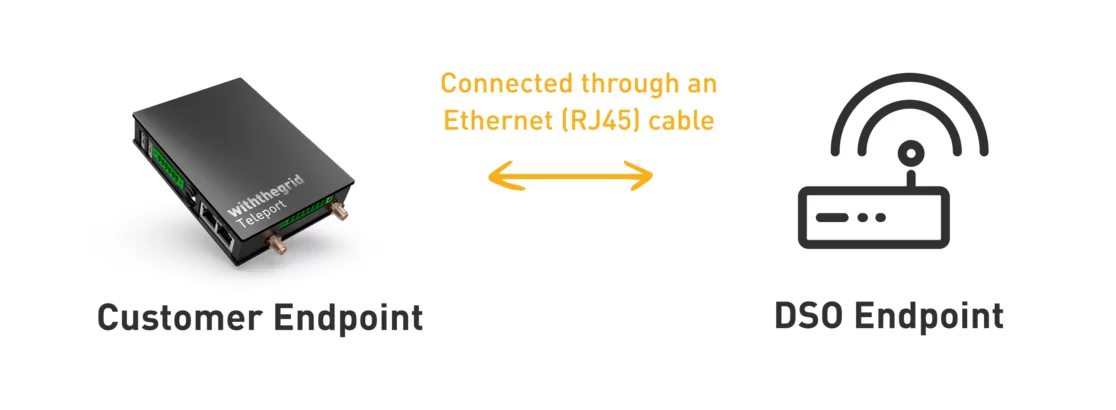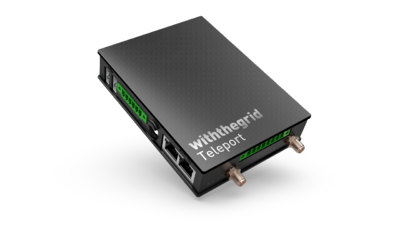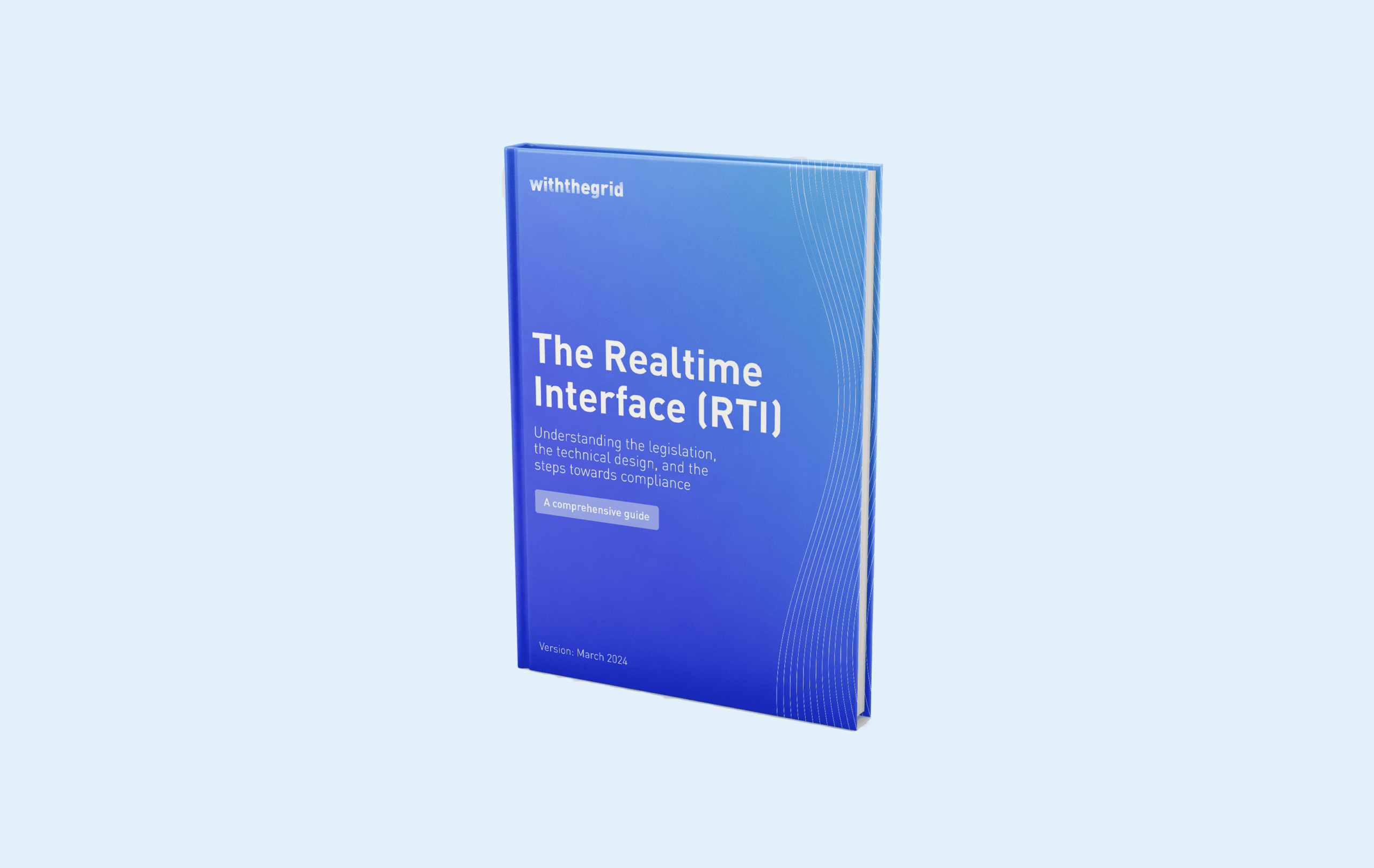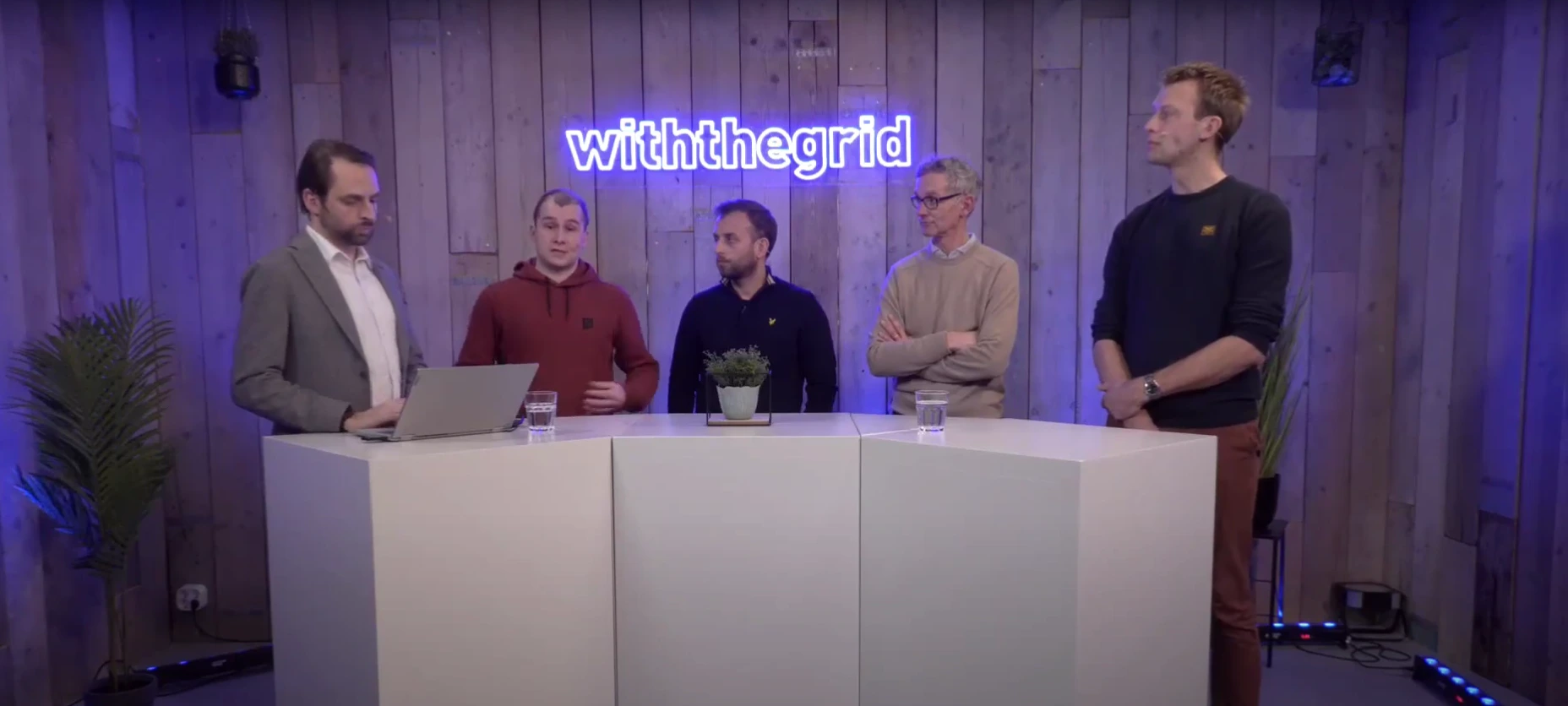
Realtime interface: Technical overview
This article covers the technical foundations, control mechanisms, safety protocols, and implementation of the Realtime Interface.
Renewable energy sources such as solar and wind power are playing a central role in the energy transition, but their unpredictable nature increases grid challenges,To learn more about grid challenges, we recommend you to read the following article: “Understanding grid balancing and congestion management“ and forces grid operators to find new congestion management or alternative capacity management strategies.
Enter the Realtime interface (RTI).Find the complete overview on this page: Realtime interface overview.
Introduced by Netbeheer Nederland,See: Netbeheer Nederland. (n.d.). Realtime interface. it’s a tool that promises to bridge the communication gap between energy producers and grid operators, and allow remote control of energy assets in case of acute congestion.
But what exactly is this interface, and how does it function?
This article delves into the technical workings of the RTI, its cybersecurity features, and why it is essential to protect the grid in case of overload.
Technical foundations of the Realtime interface
At its core, the Realtime interface (RTI) is a technical framework that enables communication and coordination between electricity generators and grid operators. It acts as a bridge, allowing both parties to collaborate effectively and ensure an efficient use of the grid’s transmission capacity.
1. Connecting the dots
The Realtime Interface relies on two key components: the Customer Endpoint and the Distribution System Operator (DSO) Endpoint. These endpoints serve as the interface’s communication nodes, facilitating the exchange of information.

- Customer Endpoint: This is the component installed by the connected party (such as a solar farm or wind park). The customer endpoint receives control signals from the DSO Endpoint and processes them in accordance with the international standard IEC-61850.Learn more with the article “What’s IEC 61850?” on the IEC official website. It acts as the link between the grid operator’s instructions and the generation installation’s control system.
- DSO Endpoint: The DSO endpoint, in turn, is managed by the grid operator.
2. Keeping things secure
Giving the role of the RTI (remotely turning off energy assets), ensuring the security and integrity of the interface is critical. That’s why several layers of protection are built into the system:
- Strong passwords: The RTI system mandates the use of unique and robust passwords, following NIST SP 800-63B guidelines. This prevents unauthorized access.
- Security updates: There is a defined process for implementing security updates remotely on the RTI. This process includes monitoring vulnerability lists, manufacturer notifications, and new release notes. Patches and updates are implemented promptly after compatibility testing to address potential vulnerabilities.
- Cybersecurity training: Administrators of customer endpoints undergo cybersecurity training to ensure they are aware of best practices.
- ISO 27001 compliance: To enhance data protection, ISO 27001 compliance is desirable. This internationally recognized standard sets stringent requirements for information security management systems.
- European Network for Cybersecurity (ENCS) standards: Additional cybersecurity requirements, as specified by the European Network for Cybersecurity, are also considered to ensure the RTI’s robustness against cyber threats.
How the RTI works
1. Getting measurements data
The functionality of the RTI revolves around reading critical measurements at the transfer point of the generation installation (Point of Common Coupling). These measurements include:
- Active power output (MW)
- Reactive power (MVAr)
- Voltage levels (kV)
- Current flow (A)
Those measurement data are requested by the DSO endpoint and sent to the grid operator.
2. Taking control when needed
Beyond monitoring, the RTI enables operators to send direct control commands, known as setpoints. These commands can:
- Limit power generation to prevent overload, either as a percentage of the contracted capacity or as an absolute value in MW.
- Explain interventions through automated reason codes.
- Ensure safe-mode activation in case of communication failures, keeping the grid protected during unexpected disruptions.
There are also possible other technical applications, but it is not in scope of the RTI yet:
- Keeping power usage in check: the interface can restrict the amount of power consumed, expressed in absolute MW.
- Helping with grid stability: The RTI can manage reactive power, expressed in megavars (MVAr).
3. Safety first
If communication between the Customer Endpoint and the DSO Endpoint is lost, a predefined safe-mode operation is activated. This ensures that power generation is curtailed to a pre-set level.
The grid operator can adjust these safe-mode parameters remotely, specifying the maximum power output allowed and the duration of the mode.
Additionally, the Customer Endpoint retains measurement data for up to eight hours during a communication outage. Once the connection is restored, the stored data is sent to the DSO Endpoint for analysis and system continuity.
4. Communication frequency
The RTI regulates the frequency of data exchange between endpoints. Periodic reports are sent to maintain accuracy, but in cases of significant changes (such as power or voltage fluctuations), the RTI triggers instantaneous data transmission to ensure that grid operators receive critical updates in real time.
5. Availability and fast response times
To support grid stability, the Customer Endpoint must be operational over 99% of the time within a six-month period.
Additionally, communication between endpoints must not exceed four seconds, allowing the RTI to respond rapidly to evolving grid conditions and prevent disruptions.
Implementing the RTI in the Netherlands
1. A focus on new installations
Initially, the RTI is being deployed in new energy installations between 1 and 50 MW,Any generation installation included in the Category B of the European Network Code’s Requirements for Generators. particularly in regions where grid congestion is a pressing issue. Over time, its scope may expand to include existing installations as well.
2. Ownership and responsibility
In terms of ownership, everything from the grid up to the transfer point of the connection belongs to the grid operator.
Beyond this point, within the connection, is the responsibility of the generator or connected party. This arrangement ensures that the generator provides a functioning Customer Endpoint.
3. Compatibility with existing systems
The RTI is built with adaptability in mind. Many existing photovoltaic (PV) inverters, wind turbines and batteries are already supported by available customer endpoints like the TeleportThe Teleport Gateway is compatible with 450+ types of energy assets. Want learn more? Check the Teleport’s Asset Library., ensuring a smooth transition without the need for costly hardware overhauls.
Getting started with a Customer Endpoint
The Teleport Gateway is the first endpoint that fully meets Dutch grid regulations. It has been developed in collaboration with the national grid operators Stedin, Alliander and Enexis, and certified by DNV.

- Extensive compatibility: Supports over 450 types of energy assets,Check the Teleport’s Asset Library. making it highly adaptable for various PV inverters, wind turbines, and battery storage systems.
- Advanced security: Implements European-grade encryption and a strict no-inbound communication design to prevent unauthorized access.
- Easy deployment: Designed for effortless installation, ensuring minimal disruption.
The Teleport has already proven its value in real-world applications, helping leading energy companies optimize their participation in imbalance markets, intraday trading, and FCR (Frequency Containment Reserve), while ensuring compliance with the Realtime Interface requirements. For more details, visit the Teleport webpage.
Interested in learning more about the RTI?
Here are our recommended resources:



